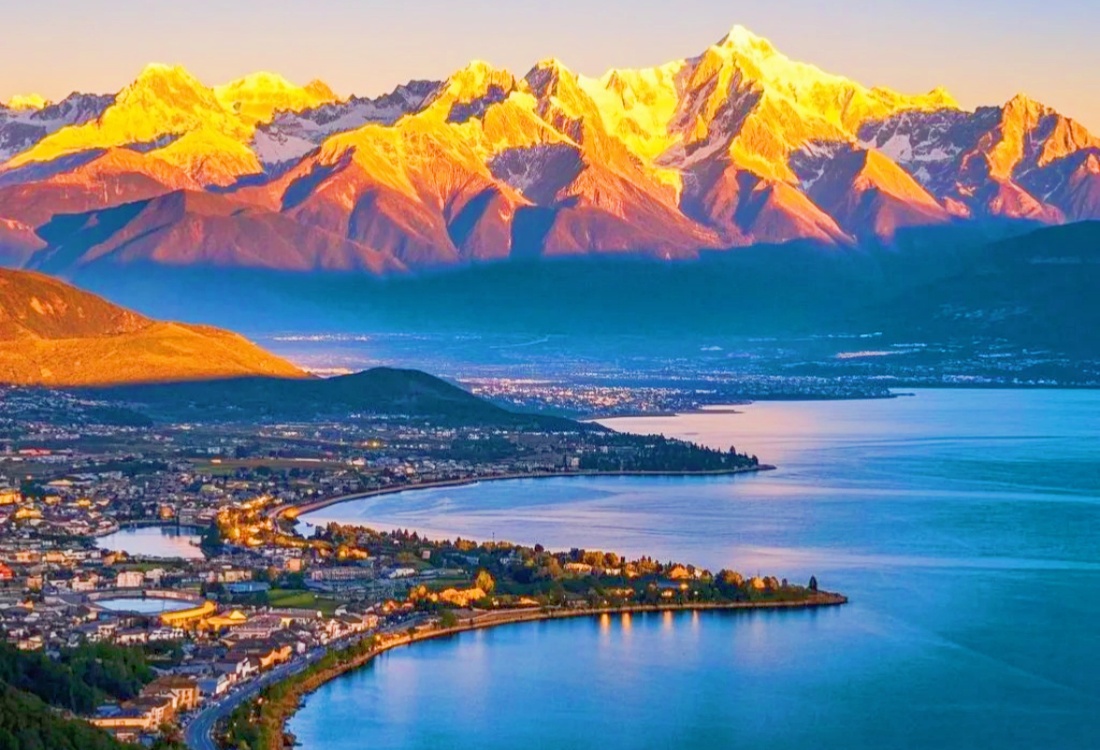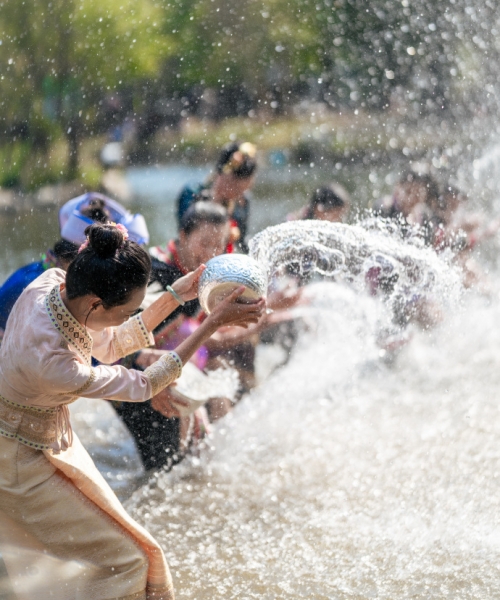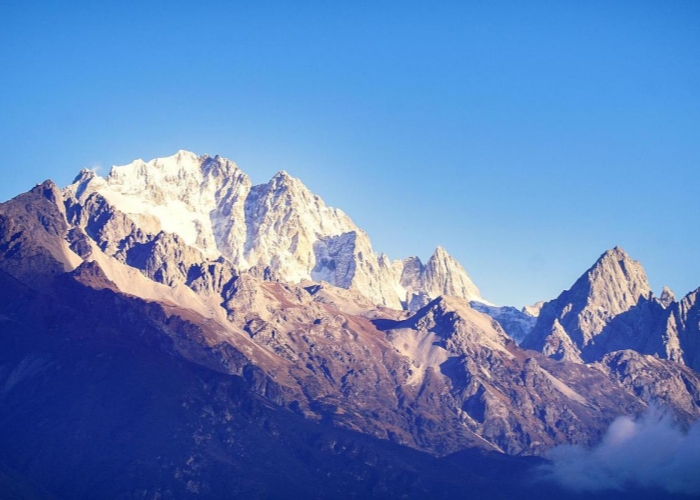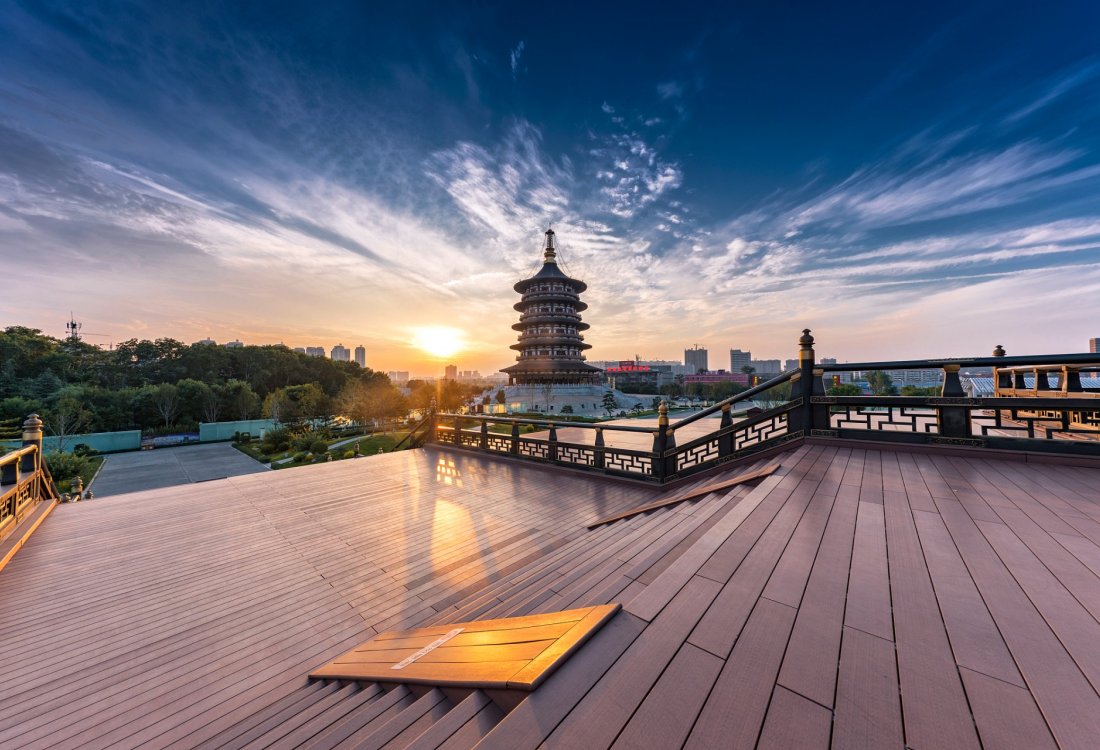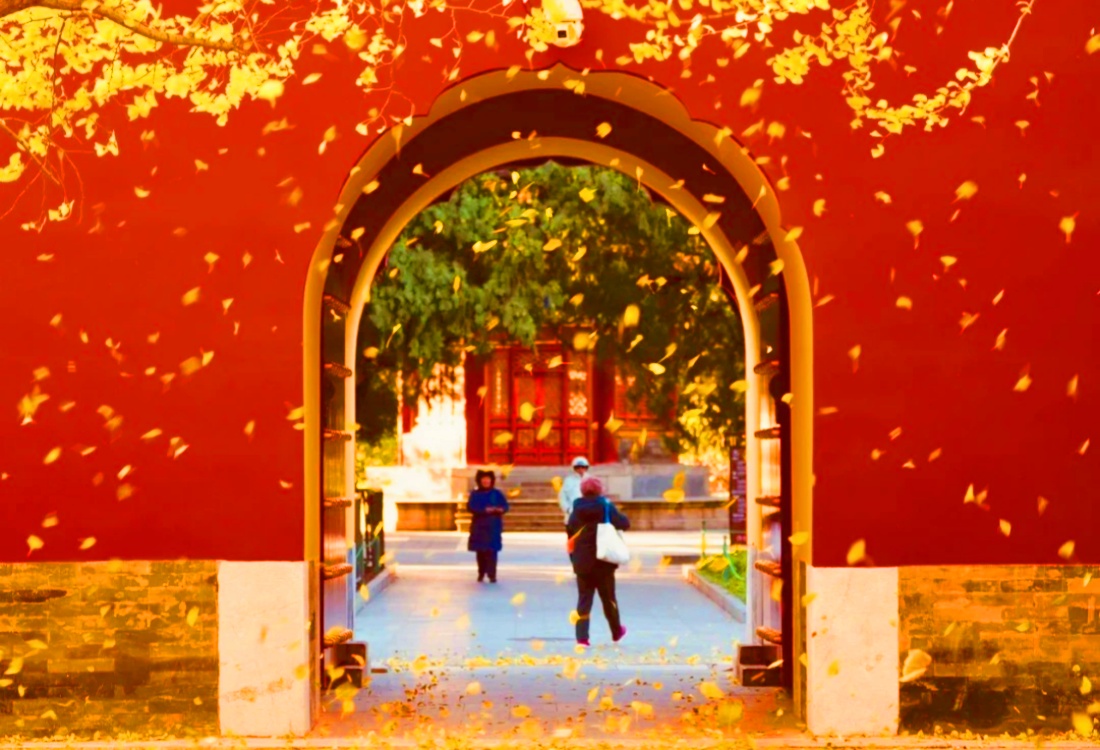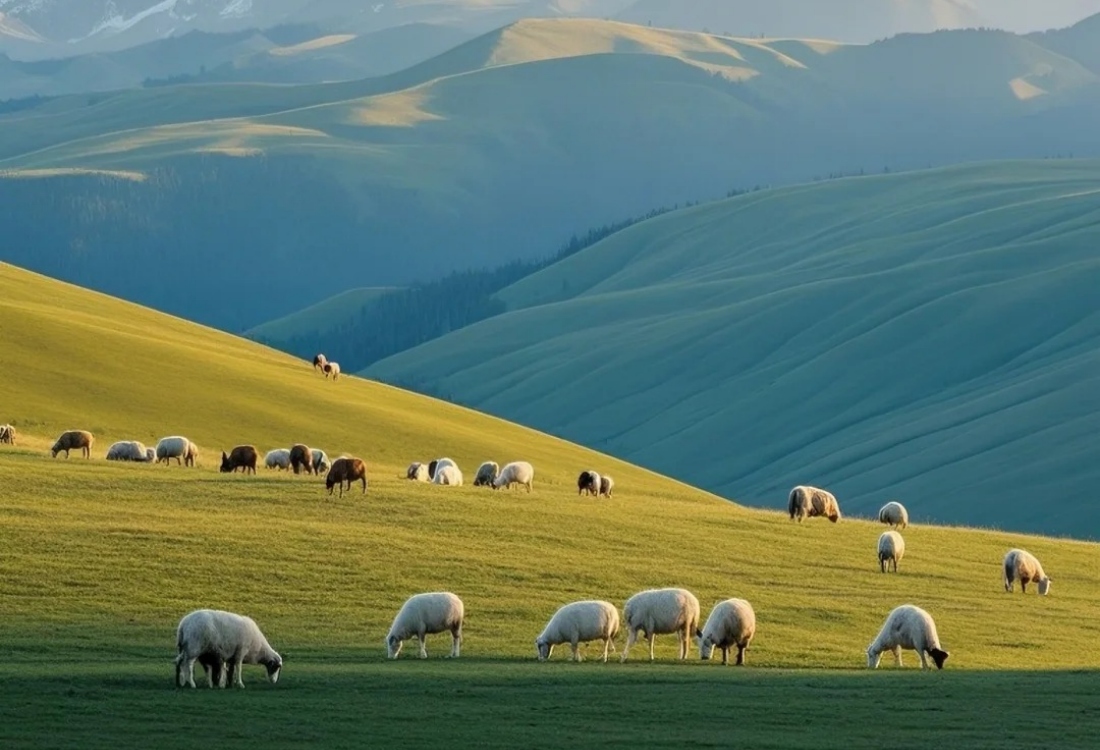Table of Contents
ToggleThis article helps you determine the best time to visit Yunnan, aligning your travel plans with optimal weather conditions, spectacular natural phenomena, and vibrant cultural festivities. Whether you dream of wandering through ancient towns, hiking majestic gorges, or witnessing the colorful traditions of ethnic minorities, understanding Yunnan’s seasonal nuances will elevate your experience from a simple trip to an unforgettable adventure.
Spring (March-May) and Autumn (September-November) generally offer the most pleasant weather in Yunnan, with mild temperatures and clear skies, ideal for sightseeing and outdoor activities.
Yunnan Seasonal Overview Table
|
Season |
Months |
Avg. Temperature Range |
Weather Conditions |
Key Highlights |
Recommended Activities/Locations |
|
Spring |
March – May |
8°C – 22°C (46°F – 72°F) |
Mild, sunny, pleasant, some rain towards May |
Blooming flowers, Water-Splashing Festival, vibrant landscapes |
Sightseeing in Kunming, Dali, Lijiang; Luoping canola flowers; Xishuangbanna for festival |
|
Summer |
June – August |
20°C – 27°C (68°F – 81°F) |
Warm, rainy season (especially July-August), humid in south |
Lush greenery, powerful waterfalls, Torch Festival |
Exploring highlands (Shangri-La, Lugu Lake), Tiger Leaping Gorge (carefully), attending festivals |
|
Autumn |
September – November |
13°C – 22°C (55°F – 72°F) |
Cool, clear skies, less rainfall, comfortable |
Golden foliage, crisp air, harvest season, clear mountain views |
Hiking Tiger Leaping Gorge; visiting Shangri-La, Dali, Lijiang; Dongchuan Red Land photography |
|
Winter |
December – February |
South: 10°C – 15°C (50°F – 59°F) North: Can be below freezing |
Mild & sunny in south; cold & snowy in north; dry |
Yuanyang Rice Terraces (irrigated), snow-capped mountains, hot springs, fewer crowds (except CNY) |
Photography at Yuanyang; Xishuangbanna for warmth; Tengchong hot springs; viewing Jade Dragon/Meili Snow Mountains |
A Seasonal Journey Through Yunnan
Spring in Yunnan (March to May): Blooms and Festivals
Spring is widely regarded as one of the premier times to visit Yunnan. The weather is characterized by pleasant sunshine and comfortable temperatures, generally ranging from 8°C to 22°C (46°F to 72°F). This season is a visual feast, with wildflowers bursting into color across the landscapes, fresh greenery carpeting the hills, and fruit trees in full bloom. It’s an excellent time for photography and outdoor activities.
Highlights of Spring in Yunnan:
- Blooming Landscapes: Witness canola flower fields in Luoping (typically February-March), azaleas around Lijiang and Shangri-La, and diverse flora in botanical gardens.
- Yunnan Cultural Festivities: The most notable event is the Dai ethnic minority’s New Year, the Water-Splashing Festival (Songkran), usually held in mid-April in Xishuangbanna and Dehong. It’s a joyous celebration involving symbolic water throwing for good luck.
- Ideal Destinations: Kunming, Dali, and Lijiang are particularly beautiful. The Yuanyang Rice Terraces, post-irrigation, offer stunning reflective views, though the absolute peak for mirror-like terraces is often earlier in winter.
- Outdoor Activities: Comfortable temperatures make it perfect for hiking, cycling, and exploring ancient towns.
Summer in Yunnan (June to August): Landscape of Lush Greenery
Summer marks Yunnan’s rainy season, with June to August seeing the most precipitation, often in the form of afternoon downpours or continuous light rain. Temperatures are generally warm, ranging from 20°C to 27°C (68°F to 81°F), though southern regions like Xishuangbanna can be hotter and more humid. Despite the rain, this season transforms Yunnan into a realm of intense greenery, with rivers and waterfalls at their most powerful.
Highlights of Summer in Yunnan:
- Verdant Scenery: Landscapes are exceptionally lush and vibrant. Ideal for seeing waterfalls like those in the Tiger Leaping Gorge area or Heilongtan Waterfall in Lijiang at their peak.
- Ethnic Festivals: The Torch Festival, celebrated by the Yi and Bai ethnic groups in July or August, is a spectacular event with bonfires, traditional dances, and wrestling.
- Cooler Highlands: Higher altitude destinations like Shangri-La (Pudacuo National Park is particularly beautiful) and Lugu Lake offer a cooler escape from summer heat elsewhere in China.
- Fewer Crowds (Potentially): Outside of Chinese summer holidays, some areas might see fewer international tourists due to the rainy season perception.
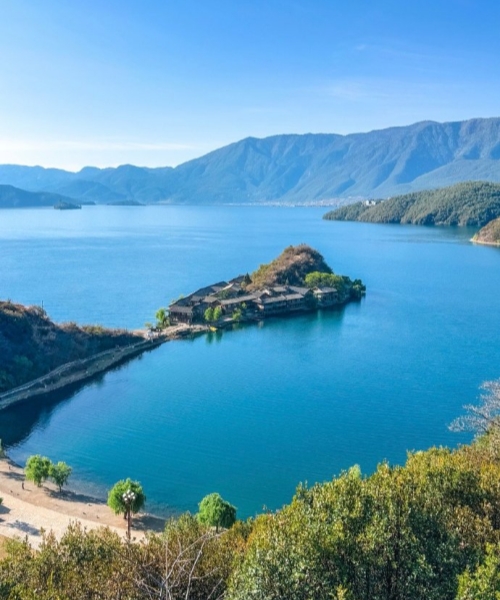
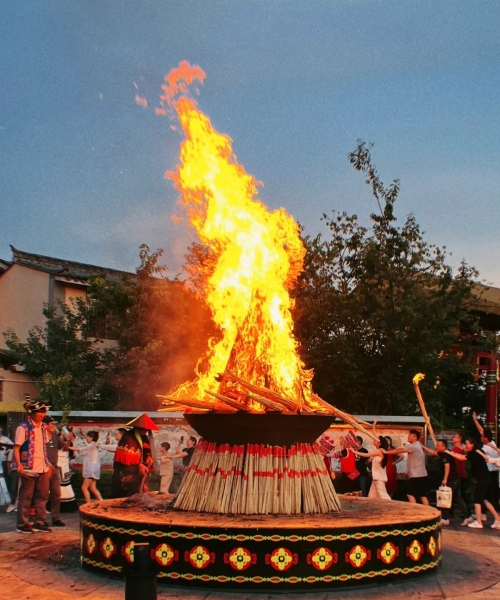
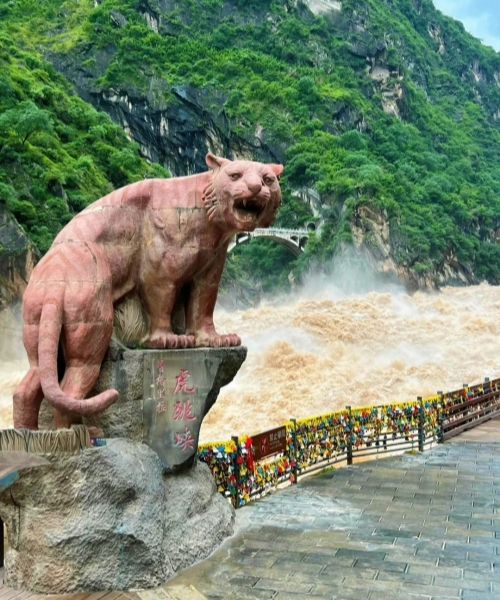
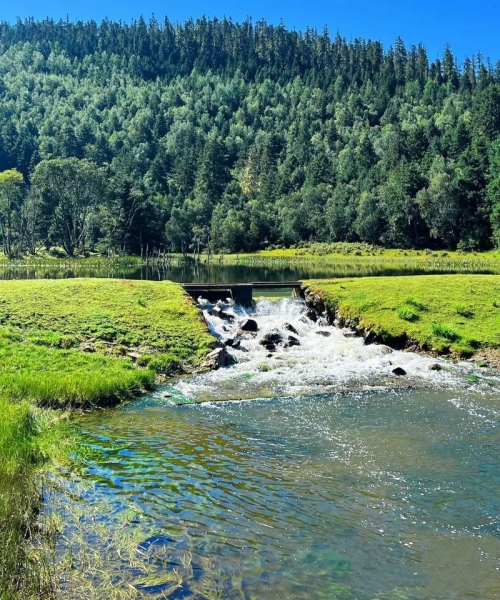
Autumn in Yunnan (September to November)
Autumn is another highly recommended season, often considered the “golden period” for visiting Yunnan. As the rainy season subsides, the skies clear, revealing crisp, sunny days with comfortable temperatures, typically between 13°C and 22°C (55°F to 72°F). The landscape transforms with rich autumnal colors, making it perfect for photography and outdoor adventures.
Highlights of Autumn in Yunnan:
- Stunning Scenery: Enjoy golden foliage in highland areas, clear views of snow-capped mountains like Jade Dragon Snow Mountain and Meili Snow Mountain. The Dongchuan Red Land also showcases vibrant colors.
- Ideal for Hiking: Conditions are excellent for trekking, especially in places like Tiger Leaping Gorge.
- Harvest Season: Experience the agricultural bounty and perhaps local harvest festivals in rural areas.
- Popular Destinations: Shangri-La is particularly beautiful with its colorful autumn landscapes. Dali, Lijiang, and Kunming continue to be pleasant. Jianshui’s ancient architecture and the Yuanyang Rice Terraces (preparations for irrigation begin) are also great choices. November, in particular, offers cool weather and receding crowds.
Winter in Yunnan (December to February): Mild South & Snowy North
Winter in Yunnan offers a diverse experience. Southern Yunnan, including Xishuangbanna, enjoys mild and sunny days with temperatures around 10°C to 15°C (50°F to 60°F), making it a pleasant escape from harsher winters elsewhere. Northern and high-altitude regions like Shangri-La and Deqin will be cold, often with snow, creating a winter wonderland.
Highlights of Winter in Yunnan:
- Yuanyang Rice Terraces: This is the prime time (especially January-February) to photograph the irrigated rice terraces, which create spectacular mirror-like reflections, often shrouded in morning mist.
- Snowy Landscapes: Witness majestic snow-capped peaks like Jade Dragon Snow Mountain and Meili Snow Mountain in their full winter glory.
- Birdwatching: Migratory birds, including black-necked cranes, can be seen in areas like Napa Lake in Shangri-La.
- Hot Springs: Enjoy relaxing in natural hot springs, such as those in Tengchong.
- Fewer Crowds: Generally, it’s the off-season for tourism (except during Chinese New Year), meaning fewer crowds and potentially lower prices.
- Xishuangbanna: A warm tropical retreat perfect for escaping the cold.
Essential Travel Tips for Your Yunnan Tour
Steering Clear of Peak Crowds in Yunnan
Yunnan is a popular destination, especially during Chinese public holidays. To enjoy a more relaxed experience and avoid inflated prices for accommodation and transport, try to plan your Yunnan tour outside of these peak periods:
- Chinese New Year (Spring Festival): Usually late January or February.
- May Day (Labor Day): Typically the first week of May.
- National Day Golden Week: The first week of October.
Smart Packing for Yunnan’s Varied Climate
Given Yunnan’s diverse altitudes and potential for rapid weather changes, layering your clothing is key.
- Layers: Pack t-shirts, long-sleeved shirts, sweaters, and a versatile jacket (windproof and waterproof if possible).
- Sun Protection: The sun can be strong at high altitudes, even on cloudy days. Bring sunscreen, sunglasses, and a wide-brimmed hat.
- Comfortable Footwear: Essential for exploring ancient towns and for any planned hikes.
- Rain Gear: If traveling during the summer rainy season, a light raincoat or umbrella is advisable.
- Warm Clothing: For visits to high-altitude areas (like Shangri-La or Jade Dragon Snow Mountain) or during winter, pack warm jackets, hats, gloves, and scarves.
Getting Around Yunnan
Major cities in Yunnan like Kunming, Dali, Lijiang, and Shangri-La are relatively well-connected by a growing network of railways (including high-speed trains) and domestic flights, making it convenient to get around Yunnan. Buses are also a common mode of transport between destinations. Within ancient towns, many attractions are easily accessible on foot.
How Long to Stay in Yunnan?
For first-time visitors looking to experience the classic Yunnan route (Kunming, Dali, Lijiang, and Shangri-La), a trip of at least 7 to 10 days is recommended. This allows for a comfortable pace to explore each location and travel between them. If you wish to delve deeper into specific regions, explore off-the-beaten-path destinations, or engage in longer treks, plan for a more extended stay.
Frequently Asked Questions About Yunnan Tour
What is the absolute best month to visit Yunnan?
While “best” is subjective, many travelers find April, May, September, and October to offer the most consistently pleasant weather, beautiful scenery, and manageable crowds (outside of national holidays). April and May boast spring blooms and festivals, while September and October offer clear autumn skies and golden landscapes. November is also excellent for fewer crowds and good weather in many areas.
Is Yunnan suitable for travel during winter?
Yes, Yunnan can be a great winter destination. Southern areas like Xishuangbanna offer warm, tropical weather. The Yuanyang Rice Terraces are at their photographic best from December to February when irrigated. Higher altitude areas like Shangri-La will be cold and possibly snowy, offering beautiful winter scenery but requiring warm clothing.
How bad is the rainy season in Yunnan?
The rainy season (mainly June to August) sees increased rainfall, but it doesn’t necessarily mean constant rain every day. Showers can be heavy but are often short-lived, particularly in the afternoons. Mornings can still be clear. While it might disrupt some outdoor plans, it also brings lush landscapes. It’s advisable to pack rain gear and have flexible travel plans.
Do I need to worry about altitude sickness in Yunnan?
Some parts of Yunnan are at high altitudes, such as Shangri-La (around 3,200m/10,500ft) and Jade Dragon Snow Mountain (cable car to over 4,500m/14,700ft). It’s important to acclimatize gradually if traveling to these areas. Drink plenty of water, avoid strenuous activity on arrival, and ascend slowly. Kunming (1,900m/6,200ft), Dali (2,000m/6,500ft), and Lijiang (2,400m/7,900ft) are at moderate altitudes where most people adjust well.

